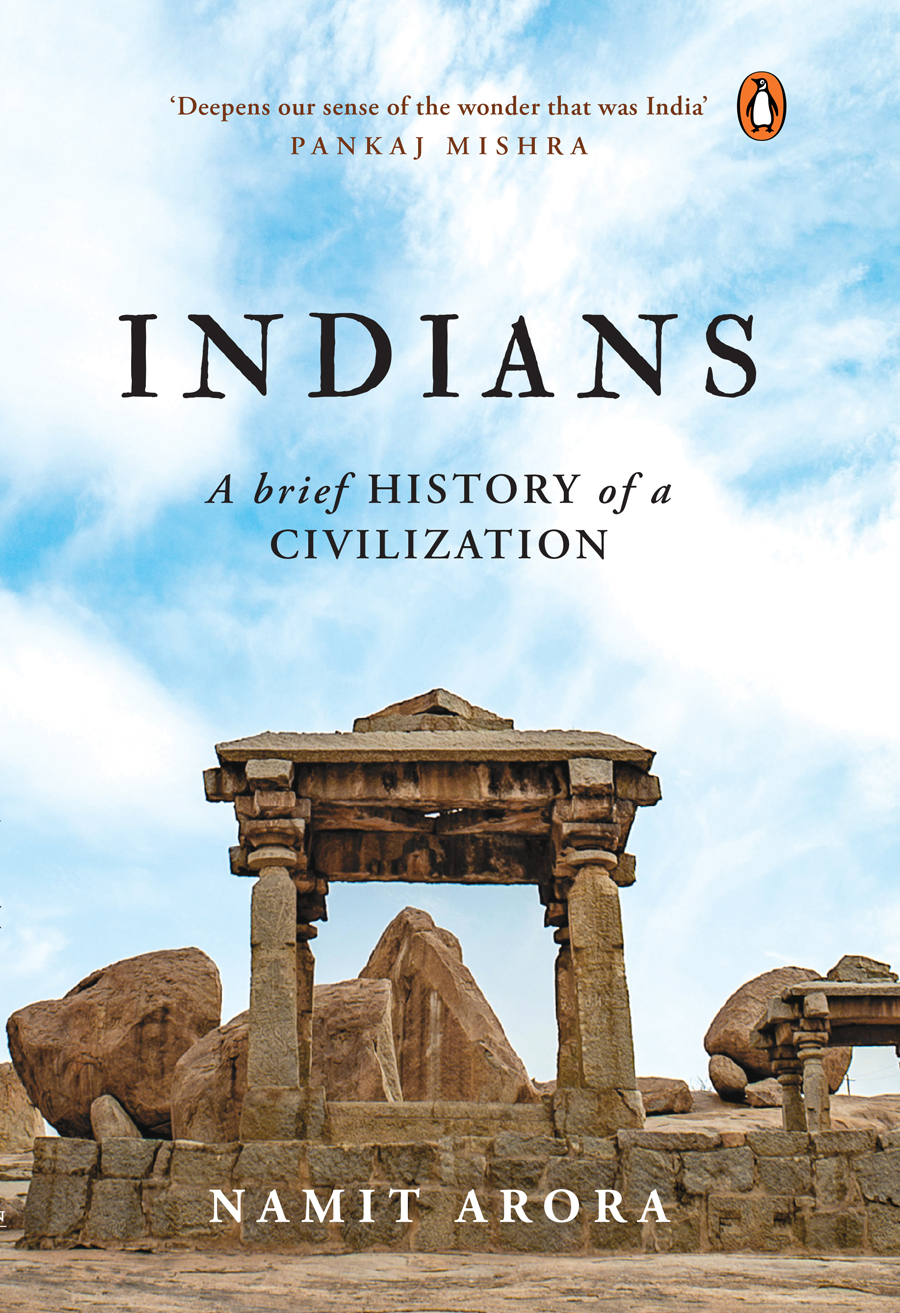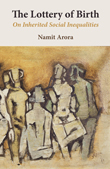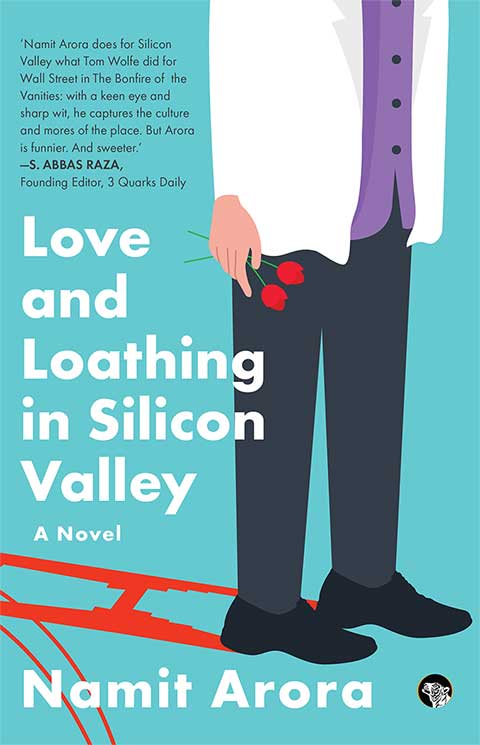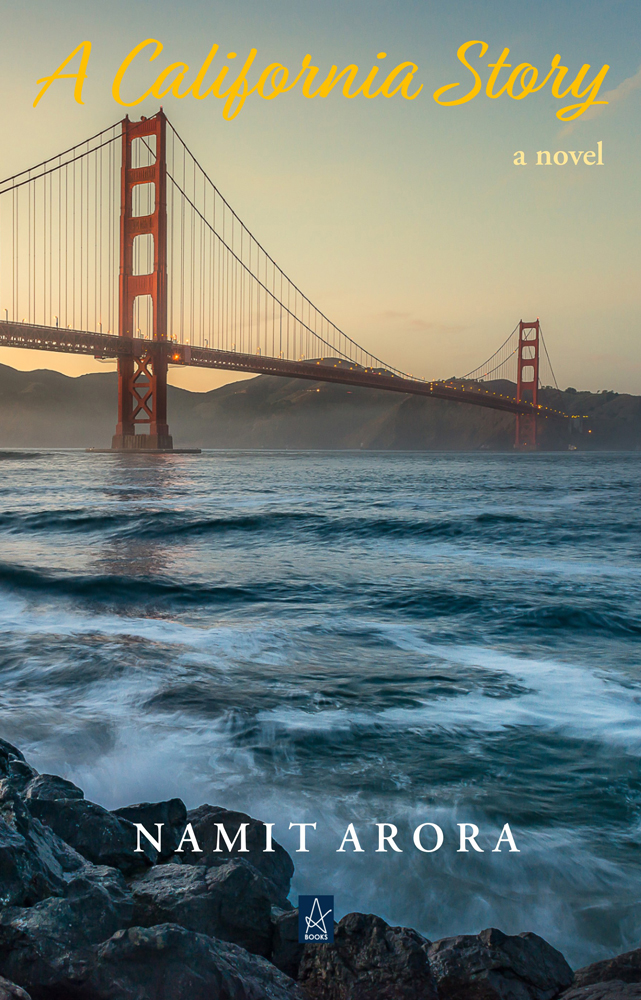| Index of articles from the Blog |
| Animals |
| Anthropology & Archaeology |
| Art & Cinema |
| Biography |
| Books & Authors |
| Culture |
| Economics |
| Environment |
| Fiction & Poetry |
| History |
| Humor |
| Justice |
| Philosophy |
| Photography |
| Politics |
| Religion |
| Science |
| Travel |
Books by
Books by
|
By Namit Arora | Nov 2020 | Comments
|
On India’s troubled relationship with democratic values
“The President has proclaimed the Emergency,” Prime Minister Indira Gandhi announced in a surprise broadcast the next morning on All India Radio. “This is nothing to panic about.” The previous night, she had made a bleary-eyed President Fakhruddin Ali Ahmed trigger the Emergency provision in Article 352 of India’s constitution, which allowed her to postpone elections and suspend most fundamental rights, including those to speech, assembly, association, and movement. With the stroke of a pen, Gandhi had effectively dismantled India’s democratic infrastructure, concentrating dictatorial power in herself. Total press censorship was imposed, and foreign journalists who did not toe the line were summarily expelled, including stringers with the Washington Post, the Guardian, and the Daily Telegraph. On June 28, someone snuck a clever obituary into the Bombay edition of The Times of India: “D’Ocracy—D.E.M., beloved husband of T. Ruth, loving father of L.I. Bertie, brother of Faith, Hope, and Justice, expired on 26th June.” The twenty-one months of Emergency that followed are regarded as the darkest chapter in independent India’s history. For those old enough to remember, the word recalls mass incarcerations without trial, a gagged press and propaganda, slum demolitions, and—most shockingly—the forced sterilizations of millions. Often cited as a cautionary tale in Indian political discourse, it is generally seen as an “exceptional” period from which India recovered admirably well, thanks in large part to the resilience of its democratic institutions and ethos.
Both books are written with an eye to the present. Since coming to power in 2014, Prime Minster Narendra Modi has presided over a kind of undeclared emergency: rejecting constitutional norms; jailing thousands of peaceful dissidents, journalists, and activists; undermining the press; retracting the last shards of Kashmir’s autonomy. While preserving their democratic veneer, he has weaponized civic institutions including the intelligence agency and police force; the central bank, judiciary, and election commission; and even public universities and the Indian Council of Historical Research. Most strikingly, like Gandhi, Modi has embarked on a series of misguided and needlessly punitive policies—from banning certain currency notes with almost no prior notice to overseeing a militarized Covid-19 lockdown that, lacking planning or preparation, prompted a mass migration on foot. The ease with which he has done this has once again raised questions about what Prakash describes as Indian society’s “troubled relationship with democratic values.” These books allow us to evaluate how today’s gathering liberal-democratic deficits stack up against the mid-1970s. Is India today less, or more, vulnerable to tyranny than it was back then? § The state of independent India was forged in a crucible of violence. Between 1947 and 1950, the years during which the constitution was drafted, the subcontinent faced the ordeal of Partition, a war over Kashmir, feuds with princely states, and various regional conflicts and discords. These experiences only strengthened the desire that various Indian leaders—Jawaharlal Nehru, other senior Congressmen, and also B.R. Ambedkar—had long harbored for a strong, centralized state that could maintain order and stability and (more nebulously) forge national unity. Luckily for them, the departing imperial government had just such an edifice with vast executive powers, which the nationalist elites took over with few changes. As Prakash points out, “there was no revolutionary overthrow of the old social order, economy, law, police, and bureaucracy.” The new state preserved much of the spirit and the basic structure of the colonial era judiciary and civil administration. A major difference was that fundamental rights, such as freedom of speech and expression, were added to the constitution. But the state retained the right to make any law to “impose reasonable restrictions” on such rights on vague grounds, including “in the interests of” preserving “public order, decency or morality” and more. An emergency could be imposed merely because of a threat of war or “internal disturbance.” The constitution essentially allowed a crooked leader to legally wreck the democracy it was designed to safeguard. B.R. Ambedkar—India’s foremost Dalit leader and the chief architect of the constitution—supported some of these provisions. But he did not share the other nationalists’ obsession with a strong motherland, which pushed them to criminalize seditious speech and curtail privacy rights. Growing up in a community deemed “untouchable,” he understood better than any other national leader just how deeply hierarchical and divided “Indian society” was. Democracy in India, he famously said in 1948, was mostly “a top-dressing on an Indian soil which is essentially undemocratic.” The state had to fertilize this soil to make democracy bloom, through vigorous social and economic intervention. “Convinced that Indian society lacked democratic values,” Prakash writes:
To that end, Ambedkar’s constitution emphasized “equality and fraternity in all spheres of life” and included provisions to safeguard marginalized groups. Over the decades, he has deservingly received much credit for his role in crafting the document. But in the early fifties, he expressed his disappointment with the final product. His vision of a pedagogic state promoting “constitutional morality” required “the leaders’ moral commitment to democratic procedures”, writes Prakash. “It envisioned that the elite would somehow overcome class and caste pressures from society. Here, the record is an abject failure.”
This was the kind of country that Indira Gandhi inherited from her father in 1966. In this period of social ferment, popular movements of various ideological orientations broke out across the country: Maoism erupted in the Bengal countryside, nativists railed against South Indian migrants in Maharashtra, middle-class youth protested assaults on academic freedom and rising prices in Gujarat, and a broad coalition of interests opposed corruption in Bihar. These uprisings are perhaps best seen as the outcome of rising aspiration and political awareness among subaltern and semi-franchised demographics. More and more, Indians now saw themselves as citizens of the state, not its subjects. But the elites that ruled them remained largely callous and apathetic. “Able to mobilize the population against British rule but incapable of accommodating popular demands and aspirations,” reflects Prakash, “the elite was compelled to rule with a heavy dose of coercion.” Already in 1958, the Nehruvian state had enacted the Armed Force Special Powers Act (AFSPA), modeled after a British era ordnance, which gave legal immunity to security forces for atrocities like rape, murder, and torture. Such crimes would later be perpetrated in the north-east, Kashmir, Punjab, and the indigenous belt of central India: all regions, crucially, with Hindu minorities. “The hand of AFSPA has fallen where the reach of Hinduism has stopped,” Perry Anderson notes in his book The Indian Ideology. During her early years in power, Gandhi cleverly swept away the party’s old guard and centralized control in herself. Touting a version of “democratic socialism,” she nationalized fourteen commercial banks that held 85 percent of all deposits and abolished the “privy purses” of the heirs of former rulers of princely states—they had previously been entitled to receive up to eight percent of all revenues in perpetuity from their territories—both actions the Supreme Court resisted. The Court also thwarted her ambitions of land reform, arguing that property ownership was a fundamental right and that parliament couldn’t seize anyone’s land for redistribution (so much for “Nehruvian socialism”). Angered by this, write Jaffrelot and Anil, Gandhi resolved “to liberate parliament from the vice-like grip of conservative justices,” setting in motion a long battle of wills. She toughened existing regulations and bureaucratized controls over businesses, later called the “license raj,” which further deepened India’s economic stagnation and worsened public corruption.
But things soon got worse. Two underwhelming monsoons and the 1973 global oil crisis led to droughts, price inflation, recession, high urban unemployment, and rampant corruption—troubles that often formed the backdrop of the arthouse cinema of the day, such as in films by Satyajit Ray and Mrinal Sen, and even an occasional Bollywood film, like Manoj Kumar’s Roti Kapda Aur Makaan (“Food, Clothing and Shelter”). Industrial growth, land redistribution, and poverty reduction stalled, falling even below their previous anemic levels. Nor had the Congress done much to alter the upper-caste domination of power and resources. Strikes, rallies, and protests teemed with sloganeering youth and students, including future regional leaders like Laloo Prasad Yadav and Nitish Kumar. Along with peasants and workers, they hitched a host of frustrations to the rousing call of Sampoorna Kranti (“Total Revolution”) issued by the freedom fighter and Gandhian socialist Jayaprakash Narayan, or JP. They railed against public corruption, official apathy, and state repression. Though national elections were just months away, they demanded Mrs. Gandhi’s resignation. Not since the freedom movement had such large protests been organized. Anand Patwardhan’s documentary Waves of Revolution (1974) offers a moving glimpse of this uprising as it played out in Bihar.
The trigger for the Emergency is widely seen as a judgment made by the Allahabad High Court in 1975. Finding Gandhi guilty of relatively minor electoral misdeeds in 1971, the Court had voided her election to the parliament and barred her from contesting elections for six years. The case went to the Supreme Court, and Gandhi considered resigning until her appeal was resolved. In the end, she decided against taking chances. Instead, she gathered her lackeys in the police and foreign intelligence to plan a covert war on democracy. Dissidents were spied on; lists of target citizens were prepared; propaganda was readied. Then came the midnight raids and the proclamation on national radio. § Gandhi liked to tell foreign journalists that the Emergency was imposed to prevent the “disruption and collapse” of the country and to inject a “new spirit of discipline and morale.” She alleged that Indians had grown “too lax, too self-centred, too permissive, too indisciplined [sic].” Signs were put up in public spaces declaring: “Courage and Clarity of Vision, Thy Name is Indira Gandhi”; “She Stood between Order and Chaos”; “Talk Less, Work More.” India’s judiciary is often praised for its independence. But it keeled right over during the Emergency, finding nothing wrong with the suspension of habeas corpus, which paved the way for mass incarceration without trial. Gandhi relished this new power, jailing over 100,000 dissidents: from the left, the right, even ex-Congressmen. Students, journalists, Naxalites, and others were attacked and imprisoned without charges. Most were held in overstuffed, unsanitary jails. Many prisoners were beaten, sexually abused, or tortured: all of which, it should be underlined, is par for the course in Indian jails. Some were punished simply to instill fear. To that end, about 0.19 percent of bureaucrats across the country were selectively fired, which helped bend the “steel frame” of bureaucracy into submission. Arrests, tax raids, and punitive job transfers were used to extract compliance. News outlets were heavily censored—banned from publishing anything critical of the government and required to get approval for any coverage of the Emergency.
The punitive nature of this project deserves underscoring. Rather than investing in human development—educating girl students, combating infant mortality (so people would have fewer babies)—Gandhi intensified state repression against the marginalized. States were given sharply higher sterilization targets, placing intense pressure and threats on officials to lure people to the knife. In cities, the police picked up beggars, the homeless, day laborers, and the infirm for nasbandi (vasectomy), including a few unmarried young men. Some villagers dared to resist collectively, such as the Muslim Meos in villages south of Gurgaon, today a satellite city of Delhi. Their electricity was cut off for twenty-five days, after which hundreds of policemen arrived with guns and tear gas to forcibly round up men for the surgery. Across the country, resistance was met with violent reprisal; the police shot hundreds dead. This had become less family planning and more manhunt. Gandhi remained evasive about these killings and saw them as collateral damage. The omelet of progress, she held, sometimes required breaking the eggs of individual rights. “We should not hesitate to take steps which might be described as drastic,” she told a group of physicians. “Some personal rights have to be kept in abeyance, for the human rights of the nation, the right to live, the right to progress.” Because officials were incentivized to produce numbers, not quality, sterilizations were often done hastily in unsanitary camps; many suffered injuries, a few died. (Rohinton Mistry would later depict such events in his 1995 novel, A Fine Balance.) In regions hit by drought, aid to the poor was linked to getting sterilized. Bihar even restricted ration cards to the first three children in each family and fired family planning officials who missed their sterilization targets by 50 percent. During the Emergency, nearly eleven million people were sterilized, at a rate about five or six times higher than in preceding years.
Both sterilizations and slum demolitions were led by Indira’s son Sanjay: the ruthless, unscrupulous “man of action.” In some ways he anticipated the shifts India would later make. As Jaffrelot and Anil write, Sanjay held that “the economy was better handled by the private sector, socialism was passé, tax cuts were necessary.” Almost entirely due to his own total incompetence, he had failed in building a home-grown “people’s car,” a pet project that public-sector banks were arm-twisted into supporting. But undeterred by this, he now sought his métier in politics. Though Sanjay held no position in government, his mother let him speak for her and command party officials and senior bureaucrats. Like her father, Gandhi is often deemed a socialist. Yet she made taxation more regressive during the Emergency. She also gave wealth and income tax breaks to the top one percent, offset by cuts in social welfare and education. (Indeed, like her nationalist predecessors, she disdained mass education and had the gall to call on “voluntary organizations” to educate fellow Indians, 65 percent of whom were illiterate at the time.) She did a bit more land redistribution than in previous years but showed little interest in making these changes unchallengeable in the courts. Her regime, write Jaffrelot and Anil, mostly combined “corporatism and authoritarianism,” thwarted labor movements and trade unionism, and favored “private sector monopolies.” A member of parliament wondered “if this is really a swing to the left or whether it is not, in fact, a swing to the right?”
Democracy, write Jaffrelot and Anil, “fell apart so quickly in India in 1975 because its core values, including liberty, were poorly institutionalized in the Indian setting.” Constitutional morality was a theoretical idea to most people, especially in villages, where lives were governed by older social codes. The Emergency was only an intensification of the violence that most citizens, especially the poor, had long suffered from the state and society. Deep down, many still accorded their “pedigreed” leaders the sort of feudal reverence that monarchs had once enjoyed. If anything, they tended to blame state officials for the excesses—not Gandhi or her son, who remained popular afterwards—revealing a sizable preference for charismatic authoritarian leaders that continues today. By late 1976, Western media had grown largely critical of Gandhi’s regime. At home, popular anger against sterilizations and slum demolitions had intensified. Denounced by close friends, Gandhi faced growing protests from writers and intellectuals, some returning their state awards. Eventually, even Gandhi realized that her son had gone too far and wanted to rein him in. She had always said that the Emergency was temporary, and she once again craved popular legitimacy and international esteem. In January of the next year, she abruptly released all political prisoners and called for new elections in March. But surrounded by lackeys, she had misjudged her odds of winning. The public handed her a ringing defeat. The new regime led by the Janata Party—an unlikely, rag-tag coalition of left and right parties united mainly by the goal of defeating Gandhi and reversing her constitutional mayhem—undid most of Gandhi’s excesses and made it harder to declare an emergency. But the coalition soon bungled the economy, produced social turmoil, and fell apart from infighting, paving the way for Gandhi’s return. Among the brawling parties was the RSS’s political wing, the right-wing Bharatiya Jana Sangh, which split from the Janata Party in 1980 and emerged rebranded as the Bharatiya Janata Party (BJP) that rules India today. § The meteoric rise of the BJP is the culmination of a century-long mobilization that championed a different idea of the Indian nation, organized around a narrow Hindu identity rather than civic belonging. By its very nature, Hindu nationalism, or Hindutva, is chauvinistic and hegemonic. The BJP might control the Indian state, but it governs a Hindu nation.
If Gandhi represented a bourgeois populism shading into economic leftism, Modi represents a bourgeois populism shading into cultural fascism. A party of cadres, the BJP belongs to a family of paramilitary, social, and cultural organizations, “the Sangh Parivar.” Together, they penetrate social life far more extensively than the Congress ever did or could. “In the absence of party cadres,” write Jaffrelot and Anil, “the Congress leadership lacked the ability of totalitarian regimes to diffuse ideas and implement policies.” The reach of the Hindu right’s propaganda machine, deploying both electronic media and grassroots social services, is unprecedented. BJP’s hopelessly divided opposition has little to counter it. As a result, a growing proportion of Hindus have come to believe that their way of life is threatened by India’s “non-Dharmic” religious minorities, especially Muslims—most of whom belong to the weakest socioeconomic groups in the country—and from leftist students and intellectuals, poets, journalists, social activists, and other dissenters deemed “anti-nationals.” Hindutva is so intoxicating that its acolytes can even overlook Modi’s gravest blunders, such as demonetization, a multi-year decline in economic growth, an internal mass-migration due to an ill-planned Covid-19 lockdown, and worsening relations with India’s neighbors. In fact, since 2014, India has steadily declined on the global indices of hunger, happiness, press freedom, economic freedom, and economic competitiveness.
Alongside this, the BJP has made political funding less transparent and has invested heavily in fake news factories, led by the BJP IT Cell. “We can make any message go viral, whether real or fake, sweet or sour,” boasted India’s home minister Amit Shah at a gathering of the party’s social media volunteers. The police, too, have become a partisan tool in the BJP’s arsenal, as evident in the communal attack in February 2020 that targeted Muslims in India’s capital. The government has increasingly weaponized telecom and Internet blackouts. Media houses trying to do real journalism face violence, malicious investigations, income tax raids, and outright shutdowns. Watchdog agencies like Greenpeace and Amnesty International have been harassed into suspending most or all of their operations in India. The regime’s dominance over the judiciary is plainly evident in the Supreme Court’s growing reluctance to challenge the ideological projects of the BJP, whether in Kashmir, Ayodhya, or the Citizenship Amendment Act that created a pathway to Indian citizenship based on religion. The Court has also turned a blind eye to the Modi regime’s rampant misuse of preventive detention laws—such as the Unlawful Activities (Prevention) Act, National Security Act, and the old sedition law—to arrest citizens. It is true that other than in Kashmir, basic liberties and democratic institutions are not yet as far gone as they were during the Emergency. But the nature of the collapse today feels a lot more sordid and ominous. Fear now pervades the shrinking pockets of dissenting opinion and debate; it really feels like the onset of fascism. Indira Gandhi always said that the Emergency was temporary, but the BJP’s vision is for the ages.
_________________________ The author thanks Ratik Asokan at The Baffler for his diligent and constructive editorial support. More writing by Namit Arora? |
Designed in collaboration with Vitalect, Inc. All rights reserved. |
|








